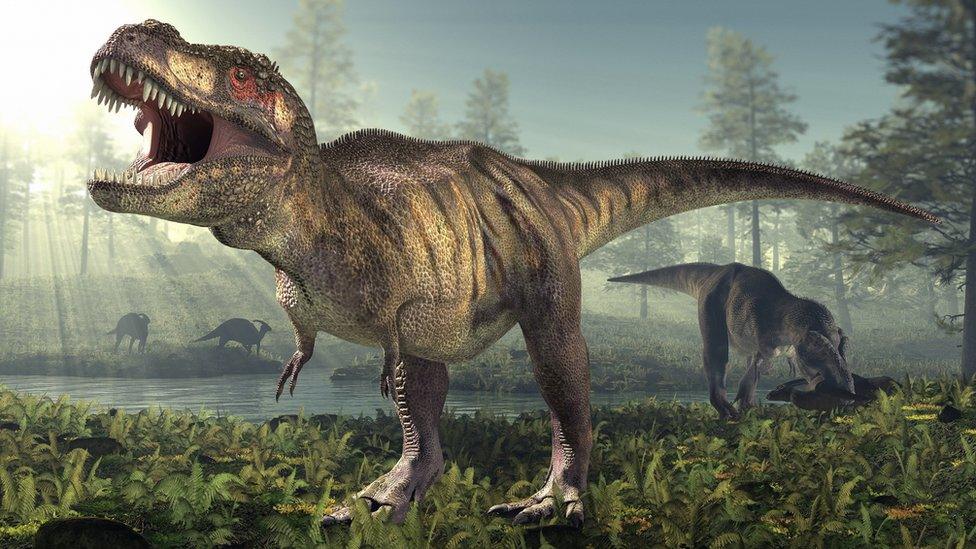Was the Tyrannosaurus rex a picky eater?
- Published
- comments

The Tyrannosaurus rex is known to have been one of the most terrifying dinosaurs to have walked the Earth.
Standing at up to four metres tall with a huge body and razor sharp teeth, there's no doubt the prehistoric animal was a powerful force to be reckoned with.
Now, a new study suggests the predators may have been even scarier than first believed.
But it may also have been choosy about what it actually ate,
Scientists studying the dinosaurs at the Institute of Dinosaur Research at Fukui Prefectural University in Japan say the nerves in parts of the jaw of the Tyrannosaurus rex may have recognised small differences in the texture and movement of their prey.
This suggests the dinosaurs would have been able to recognise different parts of the animals they consumed and this would have led them to choose what they ate and to eat each part differently, rather than just gobbling everything up at once.
Tyrannosaurus Rex means "king of the tyrant lizard"
"Our findings show the nerves in the mandible (an area of the jaw) of Tyrannosaurus rex is more complexly distributed than those of any other dinosaurs studied to date, and comparable to those of modern-day crocodiles and tactile-foraging birds, which have extremely keen senses," said lead author Dr Soichiro Kawabe.
"What this means is that T. rex was sensitive to slight differences in material and movement; it indicates the possibility that it was able to recognize the different parts of their prey and eat them differently depending on the situation.
"This completely changes our perception of T. rex as a dinosaur that was insensitive around its mouth, putting everything and anything in biting at anything and everything including bones."
The Tyrannosaurus rex was a powerful predator
The team used what's known as computed tomography to reconstruct and analyse part of a Tyrannosaurus rex's jaw which was originally found in Hell Creek Formation, Montana.
They compared their reconstruction to other dinosaurs such as Triceratops, as well as living crocodiles and birds and this allowed them to found out more about the vessels and nerves in the lower jaw of the Tyrannosaurus rex.
The study revealed the distribution of nerves in the dinosaur's jaw would have allowed then to detect the best bits of their prey, similar to how humans can out which foods they like the best through taste - and which ones they don't like so much!
- Published23 April 2021
- Published21 April 2021
- Published19 July 2017
